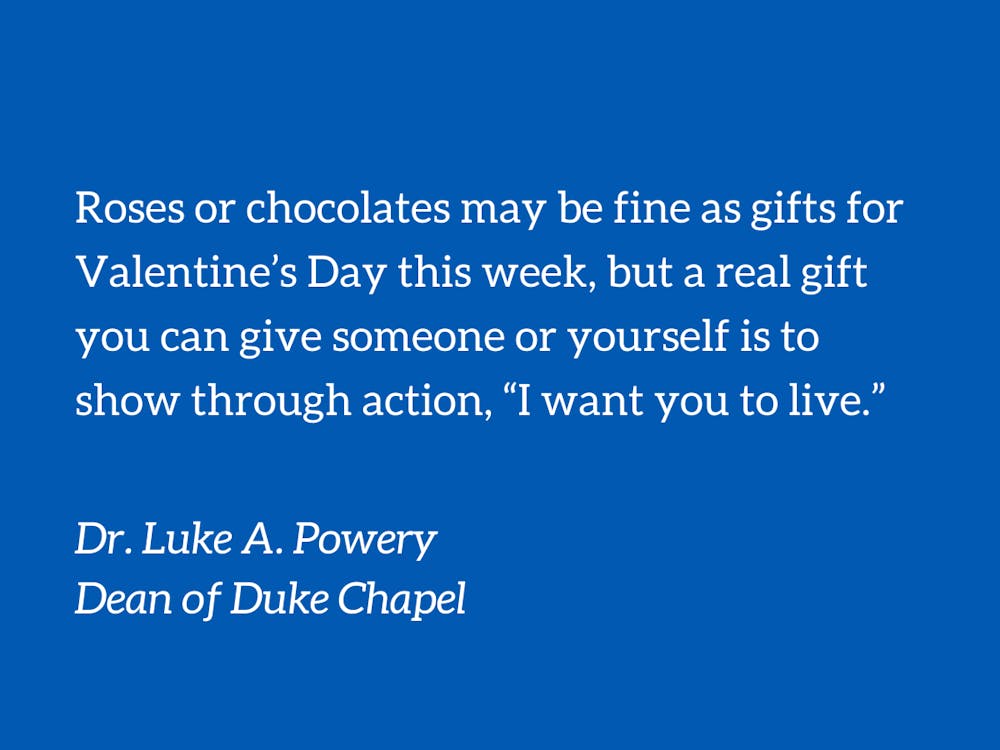Every year, Valentine’s Day is during Black History Month; the two are not necessarily related but I do see a connection: love. This is not a sentimental love focused on heart candies with sweet messages (wonderful as they are). In the context of Black history, which is a human history, the love I am thinking of comes from those human beings who endured the fiery brutality of slavery because of the color of their skin — those who came through the blood of the slaughtered, weary years and silent tears. Theirs is a tireless love to live.
I’m thinking of their love because love endures and I’m here because of their trail of tears that form a pillow of love I rest on. Their love left us a lasting legacy in word and song: “Above My Head, I Hear Music in the Air;” “There is A Balm in Gilead;” "Oh, Freedom;” “Wade in the Water.” These lasting love songs of faith, hope and endurance speak to a nature of love that we may not often consider.
To love in a hateful context — as was theirs — is a form of resistance to hate. Take for example the sermonic scene in the clearing of the woods in Toni Morrison’s Pulitzer Prize-winning novel “Beloved” — a fictional narrative account of a former slave’s memories of post-Civil War Ohio. In this scene, there is an “unchurched preacher” named Baby Suggs Holy, who preaches from her “heart” to her fellow enslaved despite having “busted her legs, back, head, eyes, hands, kidneys, womb and tongue” through the furnace of slavery.
Listen to her sermonic love song:
“‘In this here place, we flesh; flesh that weeps, laughs; flesh that dances on bare feet in grass. Love it … Yonder they do not love your flesh…. Love your hands! Raise them up and kiss them… You got to love it …! … Flesh that needs to be loved. Feet that need to rest and to dance; backs that need support; shoulders that need arms, strong arms I’m telling you … love your neck; put a hand on it, grace it, stroke it and hold it up. And all your inside parts … you got to love them. The dark, dark live r— love it … and the beat and beating heart, love that too.’”
To love one’s flesh, one’s body when others want to destroy it is a practice of resistance — resistance to demonization and ultimate destruction.
It resists that which seeks to hate or destroy or judge. Love isn’t a judge but rather the joy of life. It resists death because its breath is life, which is why ancient wisdom tells us that it is stronger than death. Love seeks to live and breathe and allow others to live. So, when you love another or yourself, you are saying, “I want you to live” through your actions. You are saying, “Even if I must die, I will love because I believe in life.”
Love is a practice, an action — not just a mood or feeling. It is something you do, you show, you incarnate, over and over again if it is genuine. You sing it. You speak it. You enact and practice it in some way. It is not mere thought or philosophy. It is embodied through head, heart and hands.
Even the children’s character Barney the Dinosaur — from the children’s television show “Barney & Friends” that my children used to watch — knew this based on his theme song:
“I love you
You love me
We’re a happy family
With a great big hug
And a kiss from me to you
Won’t you say you love me too?”
Even for Barney, love is action. In his case, it includes hugs and kisses. Love is something that is done.
Roses or chocolates may be fine as gifts for Valentine’s Day this week, but a real gift you can give someone or yourself is to show through action that, “I want you to live.” With all the specters of death in the world and in our city, to love may be the best gift you can give this year.
Do it for our human ancestors. Do it for the world. Do it for life — your life and everyone else’s.
The Rev. Dr. Luke A. Powery is Dean of Duke University Chapel. His column runs on alternate Mondays.
Get The Chronicle straight to your inbox
Sign up for our weekly newsletter. Cancel at any time.

